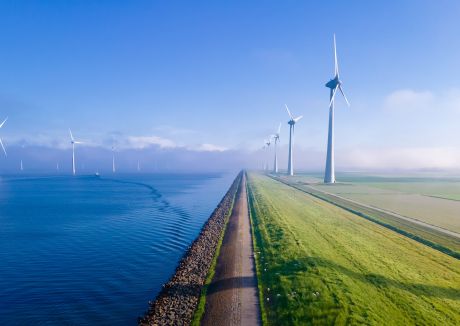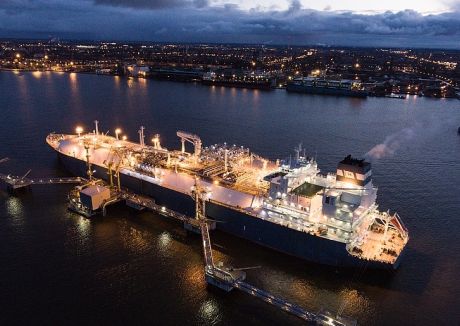The growth of Hydrogen will be underpinned by industrial customers with clear business cases working collaboratively with suppliers to manage risk. However, the nascent business has much to learn from similarly overhyped sectors in the past.
Positioning hydrogen as a key building block within the global energy transition has many challenges to overcome. Until now, the focus of many state and private actors in the hydrogen vector has been on its production and transportation, premised on a widely held view that this is a ‘one size fits all’ drop-in replacement for natural gas. This assumes that customers will simply materialise once supply becomes available…the so called ”build it and they will come” strategy. The reality is much more complex.
On the supply side, over 1000 hydrogen project proposals have been announced, with 800 to be operational by 2030. Although USD 320 billion has been invested in these projects, only USD 29 billion has been committed by final investment decision (FID), while less than 1 mtpa of the announced 38 mtpa supply is being deployed today.
Whilst these bullish projections are supported by fiscal incentives, such as the US government’s Inflation Reduction Act (IRA), there are many more downward pressures. The equipment supply chain required to deliver this revolution is simply underdeveloped as electrolyser manufacturing capacity is not keeping pace with demand. An absence of bankable customers for the product will delay investment commitment. Considering the era of cheap money is over for now, the substantially higher cost of debt is another drag. Finally, the technology risk inherent in electrolyser scale up and new technologies that are required to bring down costs, is weighing on investors. For these reasons it seems highly unlikely that the projected 37-fold increase in capacity will be operational by 2030.
Lessons from history
The history of UK mobile telecom spectrum auctions may hold some lessons for the hydrogen industry. At the outset of a new industry the value or utility of the product to the consumer is highly speculative and lacks benchmarks, which can lead to massive overvaluation. When the 3G wireless mobile technology was in development, incumbent telecoms operators bid an average unit cost of almost £200 million/MHz.
It subsequently became apparent that the promised data speed increase between GSM and 3G was only really possible in close proximity to the mast and most customers would not see a transformative benefit. By the next auction in 2013, expensive lessons had been learnt. Upon the rollout of 5G in 2021 the market had become saturated, and margins had reduced significantly. Total bids dropped by 57% between the 3G and 5G auctions. It would appear that the utility of hydrogen is similarly somewhat overstated.
Elsewhere, the LNG export sector in Canada experienced similar early-stage interest with 18 export facilities proposed in the country since 2011, but only the LNG Canada (15 mtpa) project has taken FID. It is relatively easy to attract modest development capital to a new industry, but investing CAPEX that is orders of magnitude larger is far more challenging. A success ratio of 1 in 18 could easily be applied to hydrogen projects in development.
Consumer pushback
Domestic consumers have already exhibited reluctance to implement hydrogen, resisting change with a negative perception of this new and unknown technologies. Last year, residents of UK coastal town Whitby vociferously opposed a plan to switch over the local natural gas distribution network to green hydrogen on concerns over safety, efficacy and costs.
Similar public outrage has rallied against the London Mayor’s expansion of the Ultra-low Emission Zone (ULEZ) in London, which requires older and higher emission vehicles to pay a daily charge. The scheme has typically impacted lower-income households and has been a case study for policy makers in ensuring households can benefit from the change rather than feeling the impact in their pocket.
It is clear the majority of consumers will only support decarbonisation if it does not impact their cost of living. Governments will need to not only fund adoption but then carefully and strategically design the process to avoid negative impacts. Local and national governments face a dilemma between combatting climate change and ensuring re-election. Considering the swing to populist politics, governments must tread carefully and balance their responses. Vested Interests always beat the collective good.
Today, the UK’s fragmented and decentralised energy sector does not lend itself to systemwide change. The regulatory environment is designed for a mature market and not suited to the incubation of a new industry. Unless there are fundamental regulatory changes, large scale hydrogen adoption will not be possible.
Some countries have openly encouraged hydrogen adoption, particularly Germany in its efforts to replace Russian gas imports. The government in 2021 announced H2Global, a EUR 900 million funding instrument to purchase green hydrogen products cheaply on the world market and to sell them to the highest bidder in the EU.
The US administration’s IRA promises tax credits for hydrogen and carbon, capture and storage (CCS) adopters but the reality is more complex as slow-moving regulation and a lack of detail over how the key measure of gCO2/gH2 will work, has left the process with uncertainties. Many projects planning to utilise these benefits have been announced but time will tell how many actually take FID.
All of these steps distort the market and do not lend themselves to true commercial arrangements. The net result is that subsidies are required which eventually impact consumers via taxation.
Winning use cases
Rather than relying on mass market domestic consumption, the hydrogen sector is far better served by industrial consumers. Sectors such as fertiliser, hydrocracking and chemical feedstock, as well as heavy industry such as steel and cement are far more likely candidates for hydrogen. They clearly understand the value and affordability of hydrogen but are challenged by the high price of green hydrogen. Faced with no viable alternative and worried about the impact of future carbon taxation, they are likely ready to sign term purchase agreements that can support financing for hydrogen production projects.
Long distance aviation and shipping have a clear utility driven by the energy density requirement coupled with a lack of frequent refueling options. However, customers are not used to committing to term offtake. In this case who takes the market risk? Are these sectors bankable opportunities for hydrogen? Not yet.
Hydrogen use in large scale power generation is unlikely. Using green electricity to electrolyse water and store, transport and combust hydrogen in gas turbines has a significant efficiency penalty. Batteries will do this far more efficiently. In short-distance travel, battery EVs will also outperform fuel cell EVs in most urban environments and be more cost effective. And in heating, heat pumps represent a much more efficient usage of the power needed to electrolyse water.
Can we predict what success will look like?
For success, an integrated approach addressing the end-to-end value chain is essential. It starts with an anchor industrial customer whose offtake commitment can de-risk investment in the hydrogen production facility. Clearly a ready supply of cheap, excess renewable energy that is incremental to power demand in the area is a prerequisite.
Policies and regulation need to recognise and support the unique challenges of building a new industry, not the current model of promoting competition to drive down costs to the consumer. Subsequent smaller customers (while insufficient to underpin investment on their own) will build scale.
Finally, there is a requirement for projects to maintain some proximity to each other to mitigate transportation and storage challenges. A local value chain will have a far higher chance of success. This all requires a collaborative approach between various parties to apportion and manage the risks inherent in the supply chain. It’s reminiscent of the way companies partnered in Joint Ventures in the early days of North Sea exploration to share risk and reward.
To find out more about how Gas Strategies can support your organisation with any of the points in this blog or regarding any aspect of the energy transition, then get in touch today.








